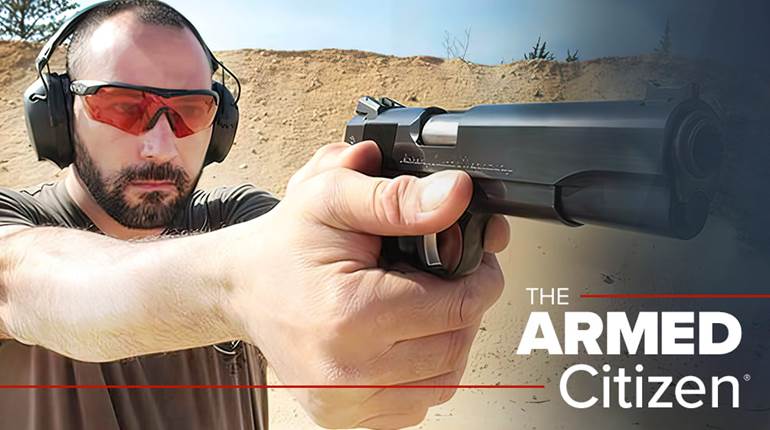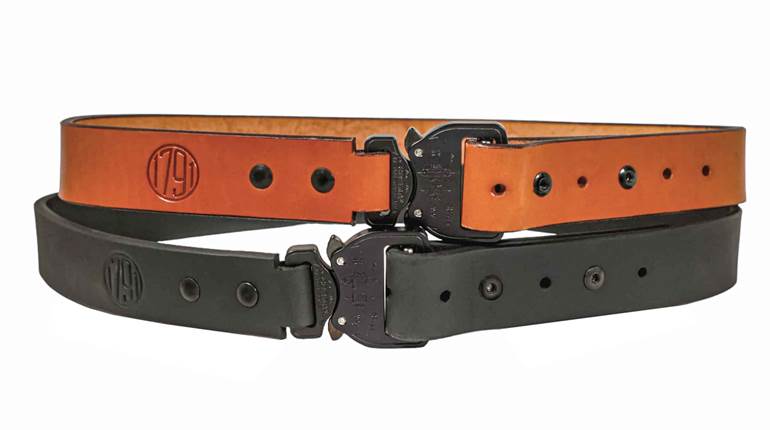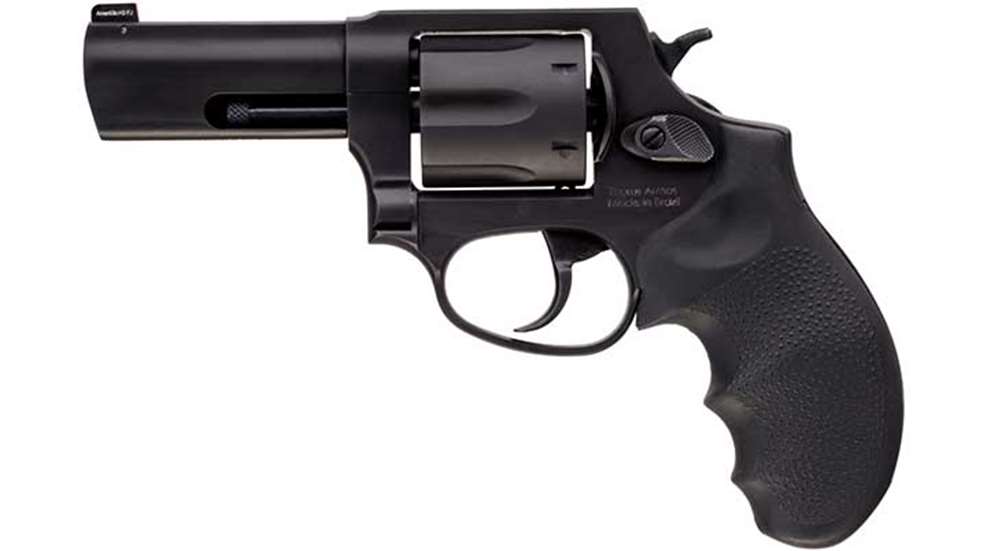
In 2018, Taurus USA decided to shake things up in the concealed-carry revolver market with the release of the steel-frame Model 856. Based on the company’s small-frame 2” barreled Model 85 chambered in .38 Spl., the cylinder of the 856 was widened by just 0.054" to accommodate six cartridges instead of five. In 2019, the 856 lineup was expanded to include mixed-metal, reduced-weight, Ultra-Lite snub-nose models with a variety of aluminum frame color options. For 2020, it has taken the 856 and expanded on the idea, literally, with the new Defender series.
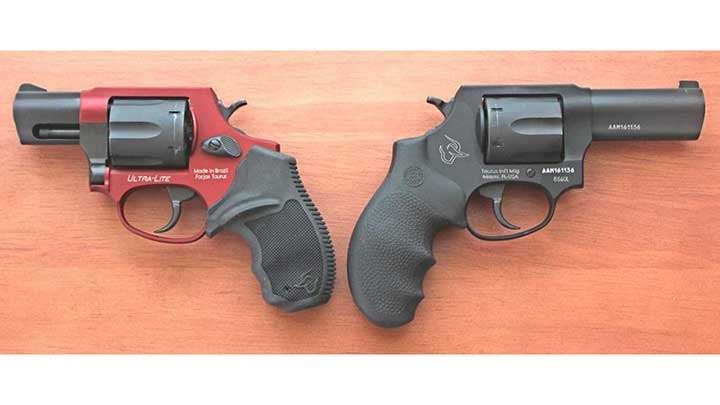
With six models to choose from, the Defenders sport longer 3” barrels, extended 3-finger grips and an upgraded front sight. For this review, I opted to work with an Ultra-Lite version to see how these latest modifications would affect the handling and performance of these concealed carry wheel guns. The new, six-shot Taurus Defender 856 Ultra-Lite (let's call it the Defender for brevity) is built around a lightweight, hard-anodized aluminum frame with a traditional rounded trigger guard.
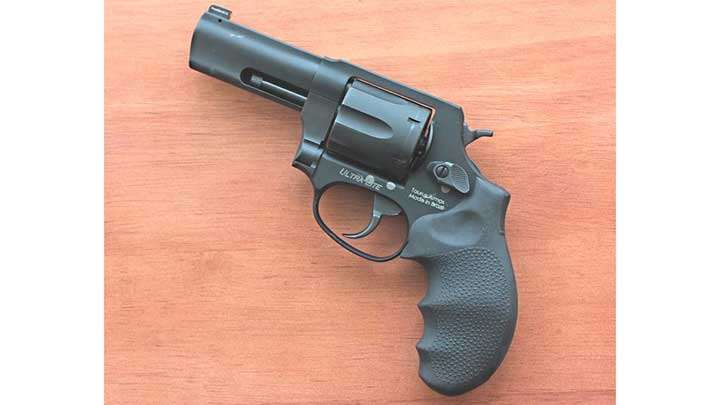
The other major components, including the barrel, cylinder, hammer, cylinder release and trigger are constructed from carbon steel and treated with a matte-black finish that matches the frame. Like other Taurus double-action revolvers, the Defender's overall design borrows heavily from the Smith & Wesson modern double-action with a cylinder that swings out to the left side when the wedge-shaped release is pressed forward towards the muzzle.
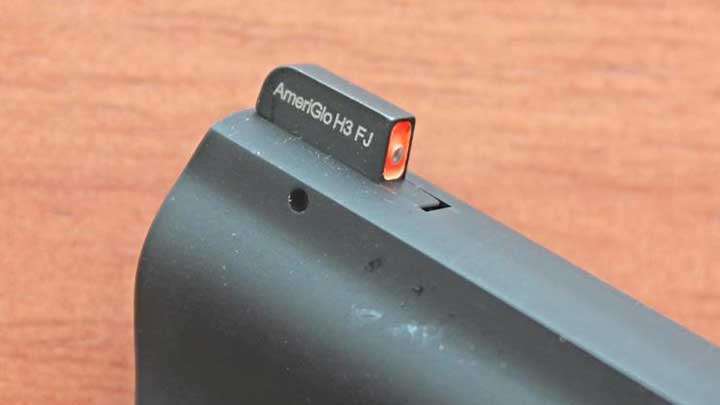
The 3" long one-piece barrel has a full length under lug which shrouds the ejector rod. The top of the receiver is grooved with a fixed square notch that forms the rear sight. The typical ramped and serrated front sight blade has been replaced with an AmeriGlo H3 FJ tritium night sight. The squared off face of the sight is filled with a bright orange enamel which provides a useful contrast to the matte-black finish of the rear sight notch. The shortened spur of the exposed hammer is deeply checked for positive purchase when cocking the hammer for single-action fire.

The two-finger-length factory standard rubber grip has been replaced with a 0.5” longer, 3-finger Hogue Monogrip. This soft synthetic grip is finger grooved along the front edge with an effective pebbled texture and thumb rest indentation directly behind the cylinder release. This revolver's caliber stamp, .38 Spl., is located on the barrel's underlug. Although the gun is not stamped +P, Taurus clearly states in the owner's manual that this revolver can safely fire .38 Spl. +P ammunition that meets SAAMI standards. Based on this information, standard pressure and +P loads were included in the ammunition test set.
Like the previous 856UL I worked with, the overall fit and finish of the Defender was properly executed with crisp lines, clean control operations and a properly applied finish. In the past, the company's quality control has been uneven, resulting in some revolvers with rough and heavy triggers. The Defender's trigger did not suffer from these issues. Instead, it has a smooth, consistent, double-action trigger pull of 11 lbs., 15 oz. with a single-action trigger pull which breaks cleanly with 5 lbs. 14 oz. of pressure.
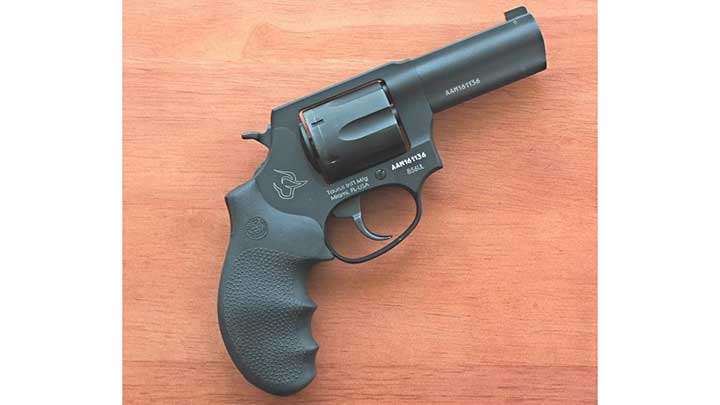
Small lightweight revolvers with abbreviated two-finger grips can be a handful to manage in the felt-recoil department, especially when loaded with hotter +P ammunition. A hand-filling grip with support for all three fingers can make a real difference. The Hogue grip installed on this version of the Defender was comfortable with a textured surface that's easy to hold onto. Also, as expected, the bright-orange front sight contributed to a crisp sight picture that was quick to acquire.
In past reviews, I've expressed a fondness for the 3" barrel revolvers which sometimes get overlooked in favor of the 2" snub guns or 4" barrel duty-size models. The 3” barrel is short enough to be comfortable to carry concealed. Shown here is Galco Gunleather’s Scout 3.0 open top leather IWB holster. Thanks to the open-bottom design, it can be used with 2" or 3" barrel 856 models with the same comfort and draw.
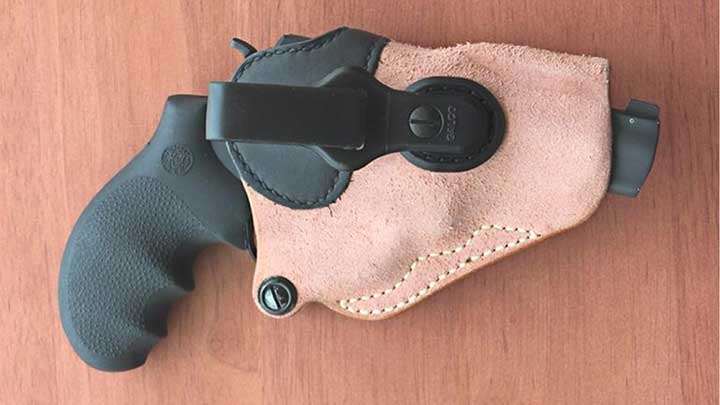
A 3” barrel provides a longer sight radius than a snubby barrel, which is a plus for more precise shot placement. The added 1” of rifled bore works to stabilize the bullet. The 3" barrel length provides a longer burn time for the powder, which in turn, usually boosts the velocity of the bullet, resulting in increased impact energy levels. But in this case, the slightly longer barrel also stretched the platform's defensive accuracy range.
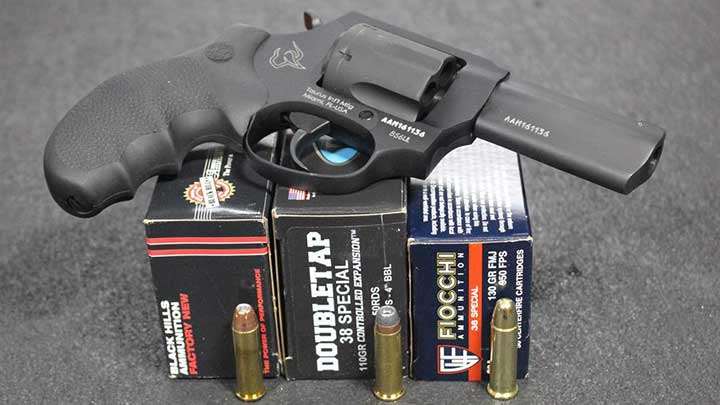
When testing the 2" 856UL, it produced five-shot groups around 2.5" to 3" at 7 yds., but the groups opened up to 4" or more at 15 yds. As a rule of thumb, I'm looking for 3" to 3.5" groups at a given distance as an acceptable level of defensive accuracy. When fired at 7 yds, the 3" Defender produced groups that hovered around 2.25" in size. So, I pushed the targets out to 15 yds where the defender kept the group averages in the 3" to 3.5" zone I was looking for.
Formal accuracy testing included a practice-grade round from Fiocchi USA, standard pressure semi-jacketed hollow points from Double Tap Ammunition and a +P jacketed hollow point load from Black Hills Ammunition. Here are the results:
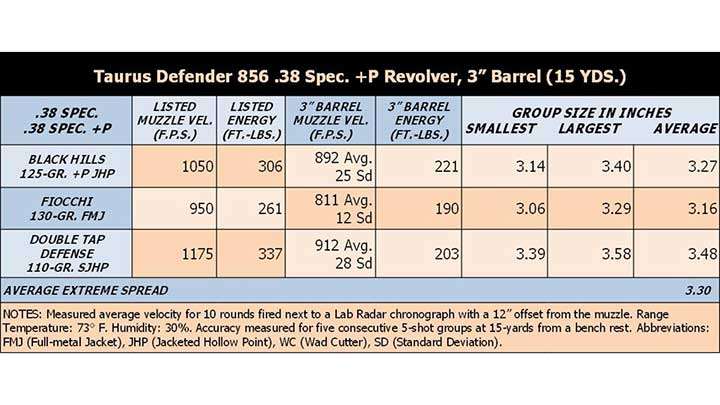
The Taurus 856 series of small-frame, six-shot, .38 Spl. revolvers are solid options for concealed carry that hold one more round of ammunition than competing models from other manufacturers. The Ultra-Lite models have proven to be well-made and reliable with smooth triggers and easy-to-operate controls. If you need a more compact profile for ankle or pocket carry, then the 2" barrel models are the way to go.
However, if the revolver is going to be carried in a belt holster, shoulder rig or off the body in a bag or purse, then the 3" barrel Defender Ultra-Lite offers some distinct advantages that are well worth considering for around $25 more than the 2” Ultra-Lite models. The Taurus Defender 856UL has a suggested price of $425. For more information on the Taurus Defender 856UL revolver, visit taurususa.com.
Specifications:
Manufacturer: Taurus USA
Model: Defender 856 (2-85631ULNS)
Action: Double- and Single-Action Revolver
Caliber: .38 Special +P
Frame Size: Small
Frame Finish: Hard Anodized Aluminum, Matte Black
Barrel, Cylinder & Appointments: Carbon Steel, Matte Black
Grip: Hogue Finger Grooved Pebbled Black Rubber
Front Sight: AmeriGlo H3 FJ Tritium Night Sight, Orange Outline
Rear Sight: Fixed Square Notch
Safety: Transfer Bar
Double-Action Trigger Pull: 11 lbs. 15 oz. (as tested)
Single-Action Trigger Pull: 5 lbs. 14 oz. (as tested)
Barrel Length: 3.00"
Overall Length: 7.50"
Height: 5.30"
Cylinder Width: 1.40"
Weight: 17.3 oz. unloaded
Capacity: 6 Rounds
Rifle Grooves: 6
Accessories: Cable Lock, Owner's Manual
MSRP: $425
Holster: Galco Gunleather Scout 3.0 IWB $89












